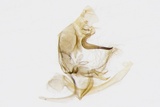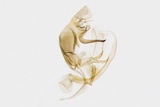Bryotropha galbanella (Zeller, 1839) Species
Last modified: Nov. 30, 2025, 4:53 p.m.
A very rare and local species in Belgium.
Distribution after 2004 is based only on specimens checked for genitalia.
Details
- Classification
- Family: Gelechiidae > Subfamily: Anomologinae > Genus: Bryotropha > Species: Bryotropha galbanella
- Vernacular names
- Gevlekte mospalpmot (NL), Perth Neb (EN)
- First mention in Belgium
- De Fré Ch. 1858. Catalogue des Microlépidoptères de la Belgique. — Annales de la Société entomologique belge 2: 45–162. On page 133.
- Status
-
Native
Distribution
Imago
Wingspan 14–17 mm.
Museum specimens
No pictures yet!Specimens in nature
No pictures yet!Bionomics
The larva lives in a opaque, whitish silken tube attached with fragments of moss.
Adults can be disturbed from conifer trunks during the day, later they become active after sunset and later come to light.
No pictures yet!
Flight periods
The adults have usually been seen from mid-June towards late August.
Observed on
- Substrates:
- Mosses
The larva feeds on mosses like Dicranum scoparium, more than likely on other mosses too.
No pictures yet!
Habitat
It prefers shady, moist places in coniferous forests, meadows and peat bogs, also on sandy soils inland.
No pictures yet!


